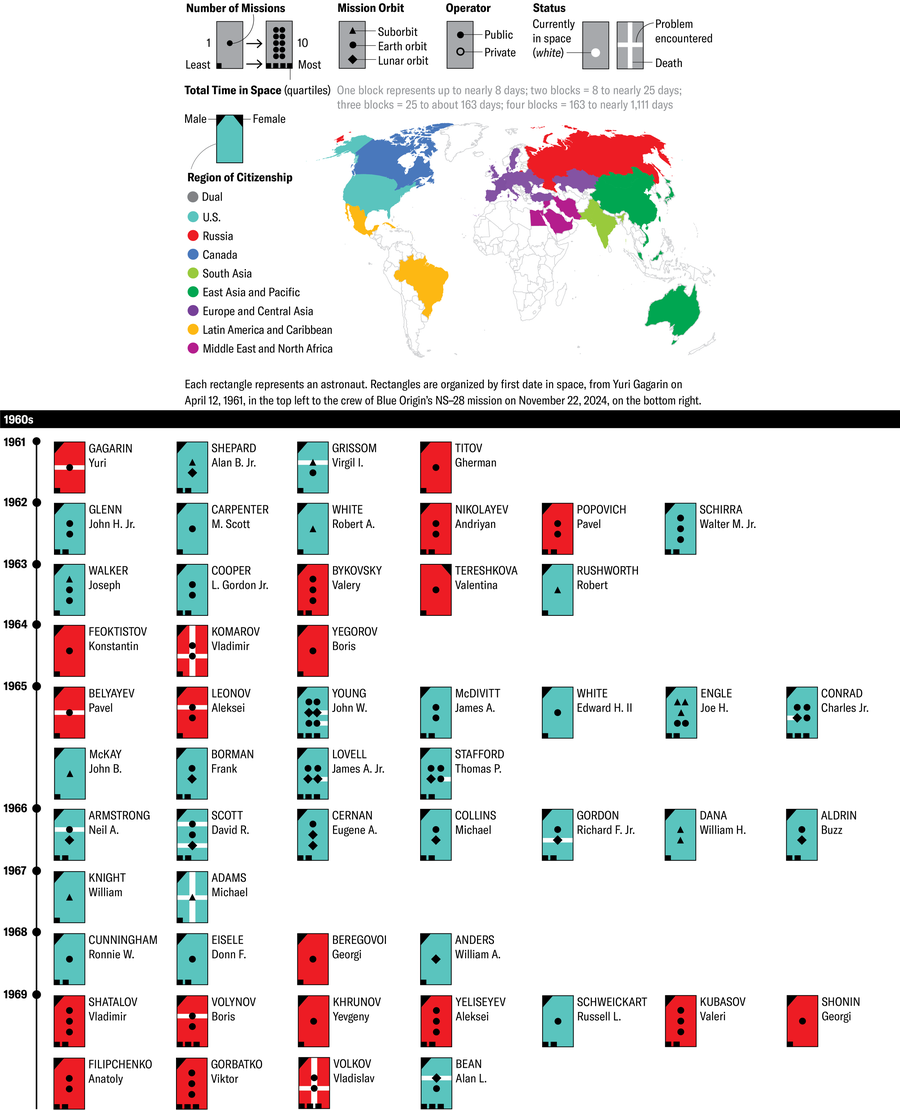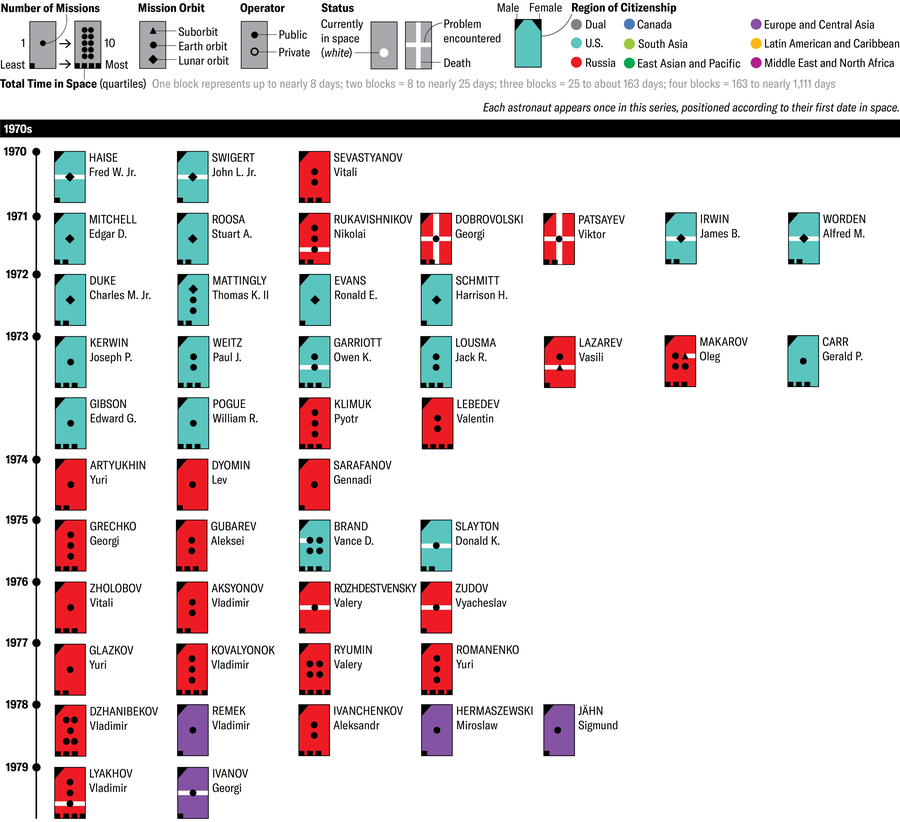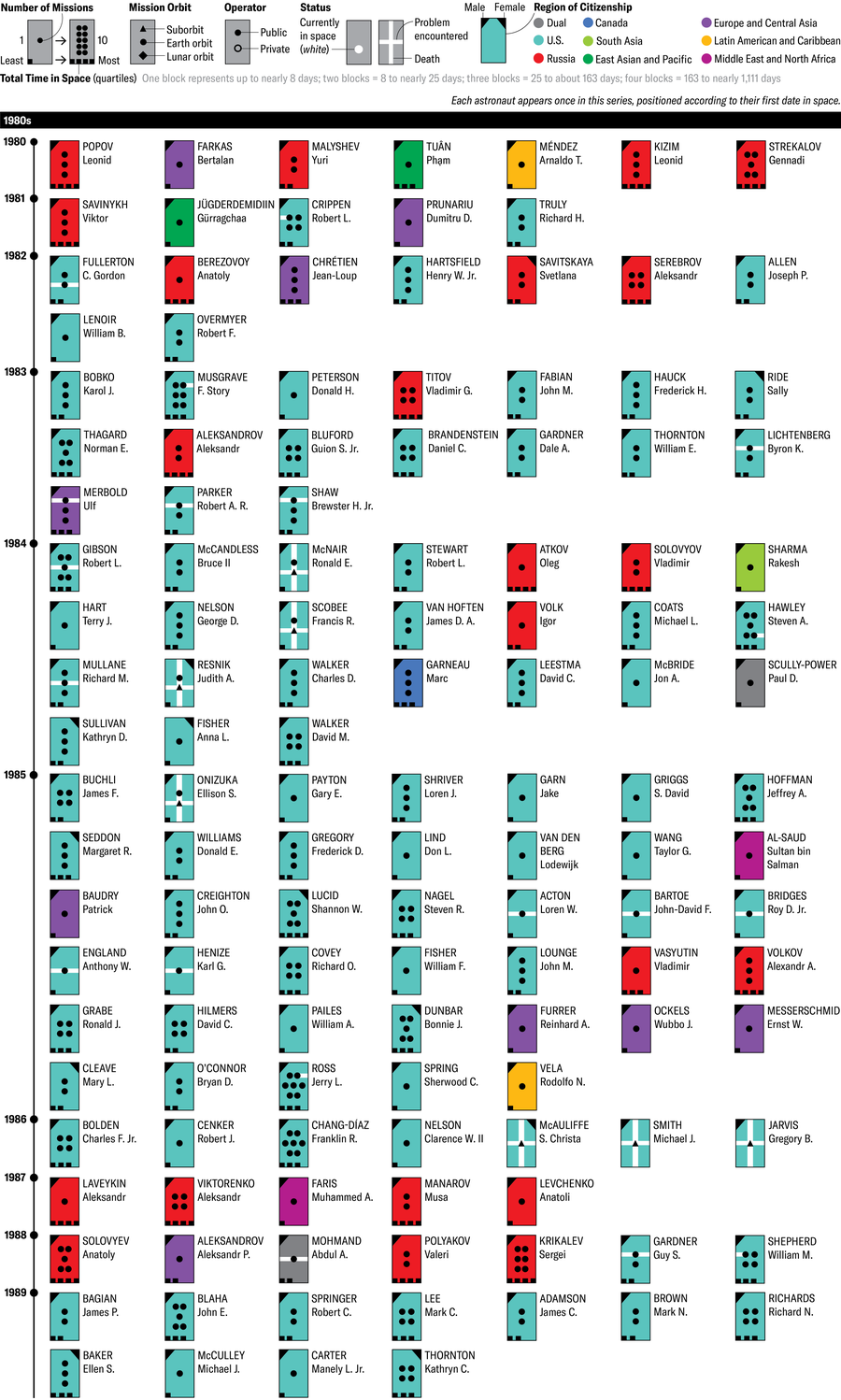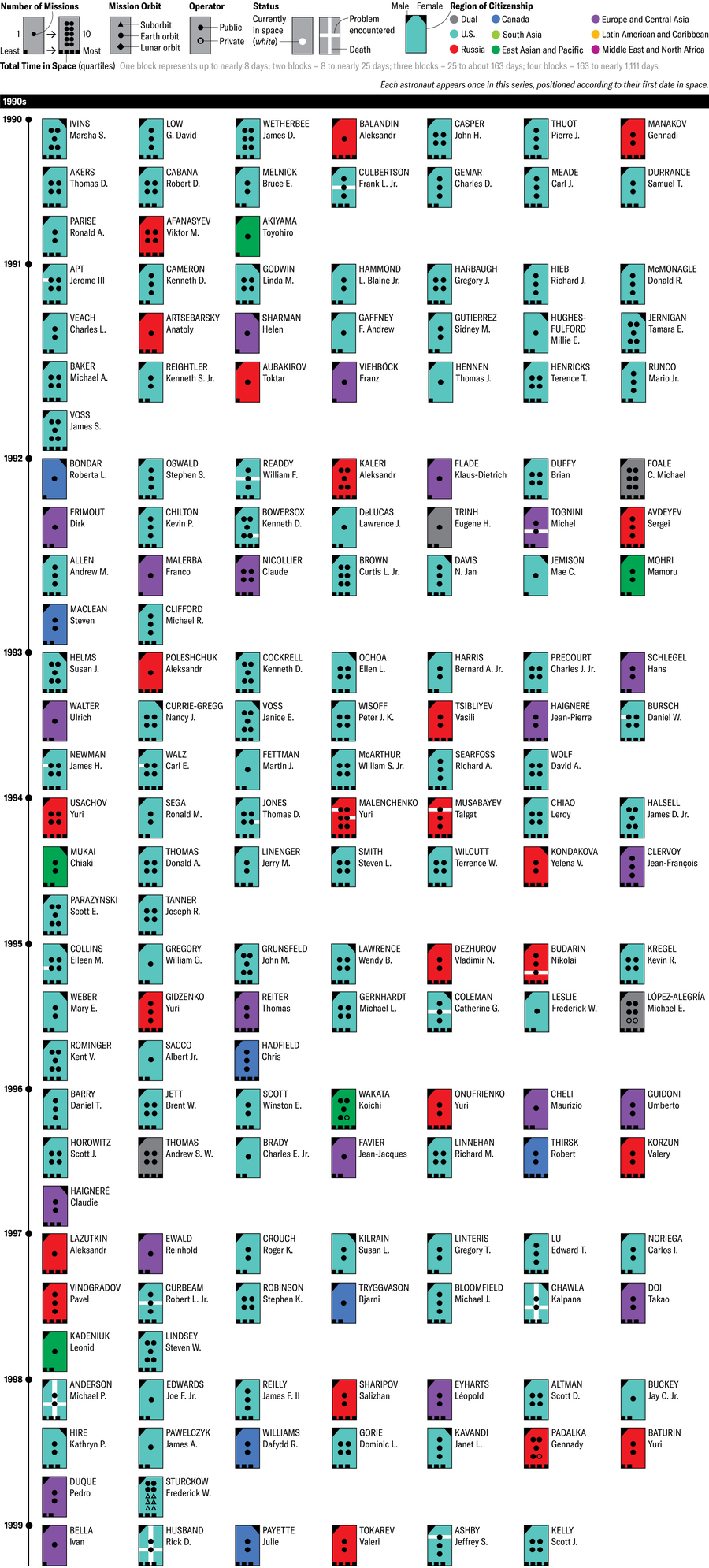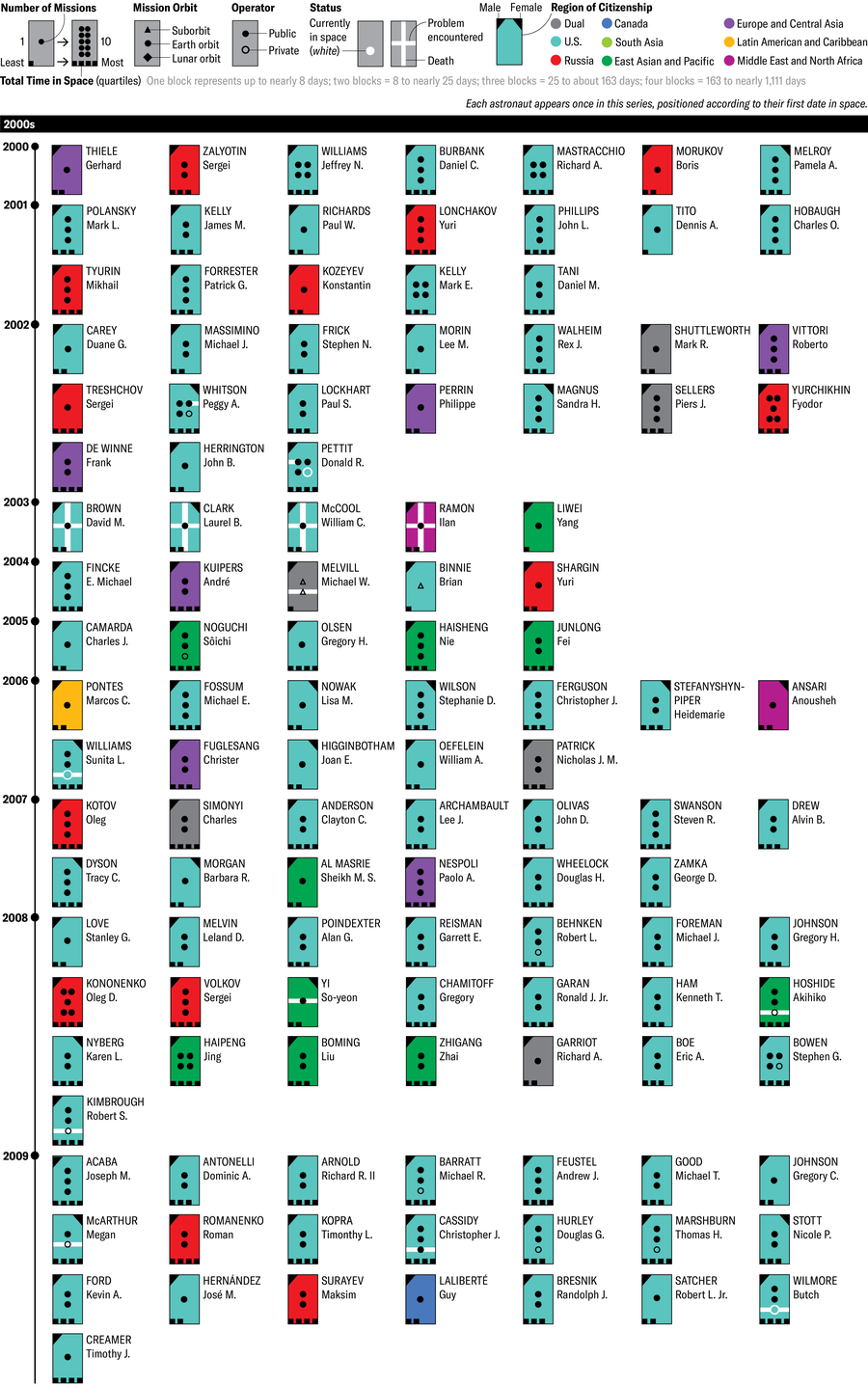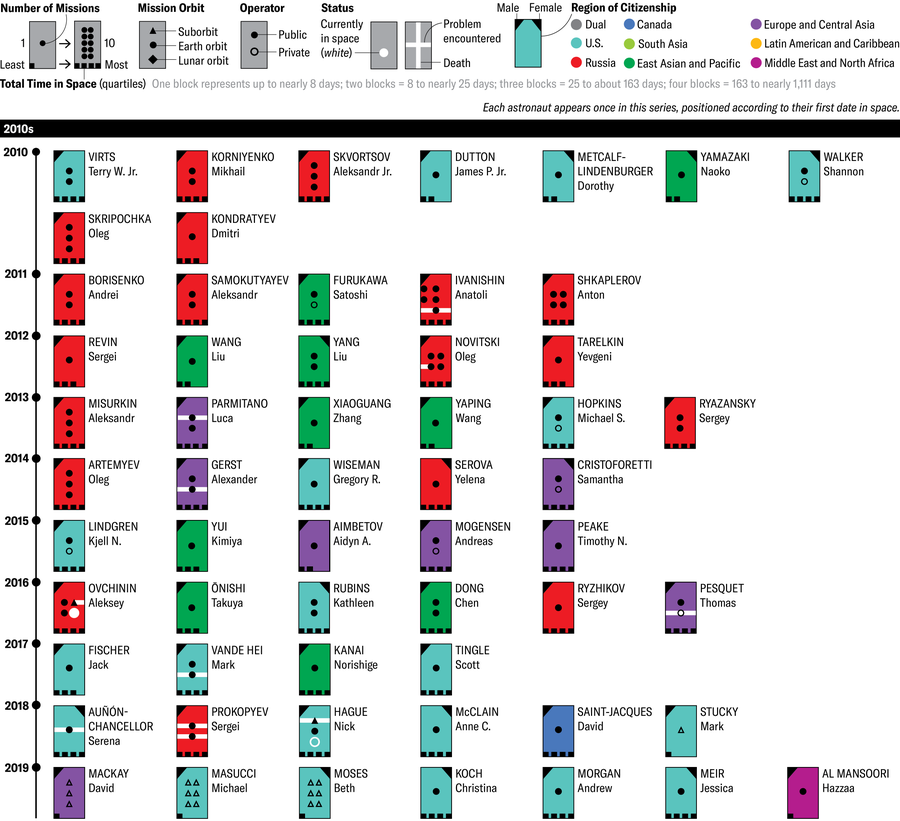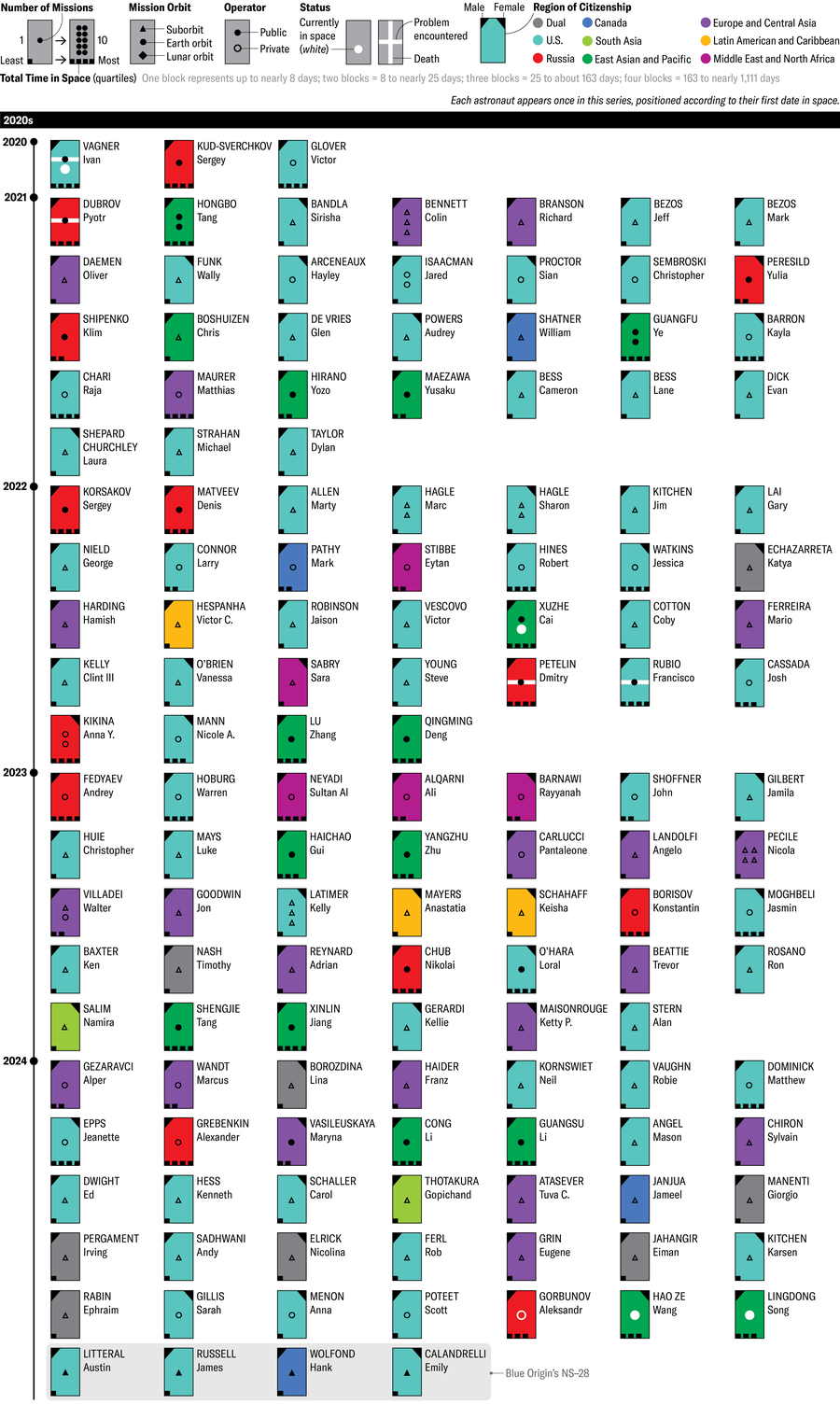In 1960 no one had ever traveled beyond Earth. Now more than 700 people have flown past the 50-mile-high mark that was considered the boundary of space when spaceflight first got started. At that time, the Soviet Union and the U.S. were the only teams, and military men around 30 years old were practically the only players. Since then, astronauts have diversified in many ways: men and women from 47 countries have reached space, including residents of every continent, most in the employ of space agencies and some with private companies. Diversity hasn’t been a straightforward march, though: in 1963 the U.S.S.R. launched the first woman into space, but in subsequent years only five more female cosmonauts flew in total, whereas dozens of male cosmonauts went up each decade.
The number of space visitors peaked in the 1990s, when NASA flew an average of six space shuttle missions a year, each usually carrying five to seven astronauts. The first shuttle launched in 1981, but the program took a nearly three-year hiatus after the Challenger disaster in 1986. The shuttle fleet was grounded again for more than two years when Columbia broke up on its return trip to Earth.
Annual Age Distributions of Astronauts sent to Space
On supporting science journalism
If you’re enjoying this article, consider supporting our award-winning journalism by subscribing. By purchasing a subscription you are helping to ensure the future of impactful stories about the discoveries and ideas shaping our world today.
The ages of astronauts are shown here for each year when people flew to space. The width of each blob represents the number of fliers for each age. Both the average age of astronauts and the spread in ages have gradually risen over time.
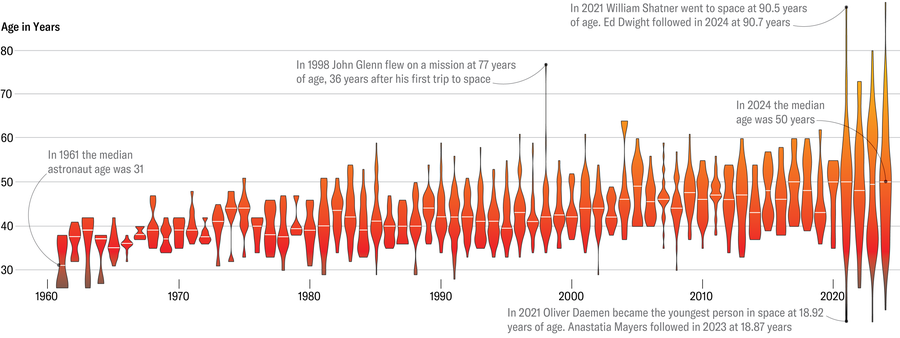
Astronauts sent to Space by Operator over time
For many years NASA and Roscosmos, the Russian space agency, were the only spacefaring entities in the world. The Chinese National Space Administration launched its first astronaut in 2003. After NASA’s space shuttles retired in 2011, NASA bought transportation for its astronauts on Russian and then private American spacecraft.

Astronauts by Region of Citizenship and gender, by decade
The black jagged line separates decades of space travel. Within each zone, the number of space travelers is shown for each geographic region, broken down by gender (male in solid colors, female in stripes).
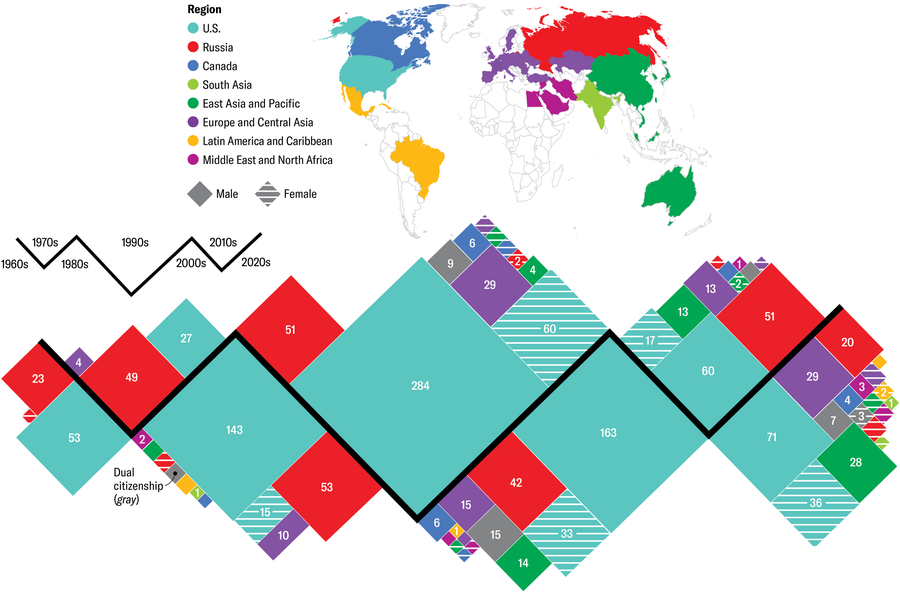
Mission Data for Individual Astronauts
Each tile represents an individual space flier. Color and tile symbols signify each person’s region of citizenship, gender, number of missions, duration in space, type of flight, and public or private status. White lines mark problems encountered and astronauts who died on space missions, and white circles indicate astronauts who were in space at press time (December 2024).
